The Williamson’s Sapsucker nest-hole that I photographed earlier this summer was apparently of huge interest to a variety of other species in the area.
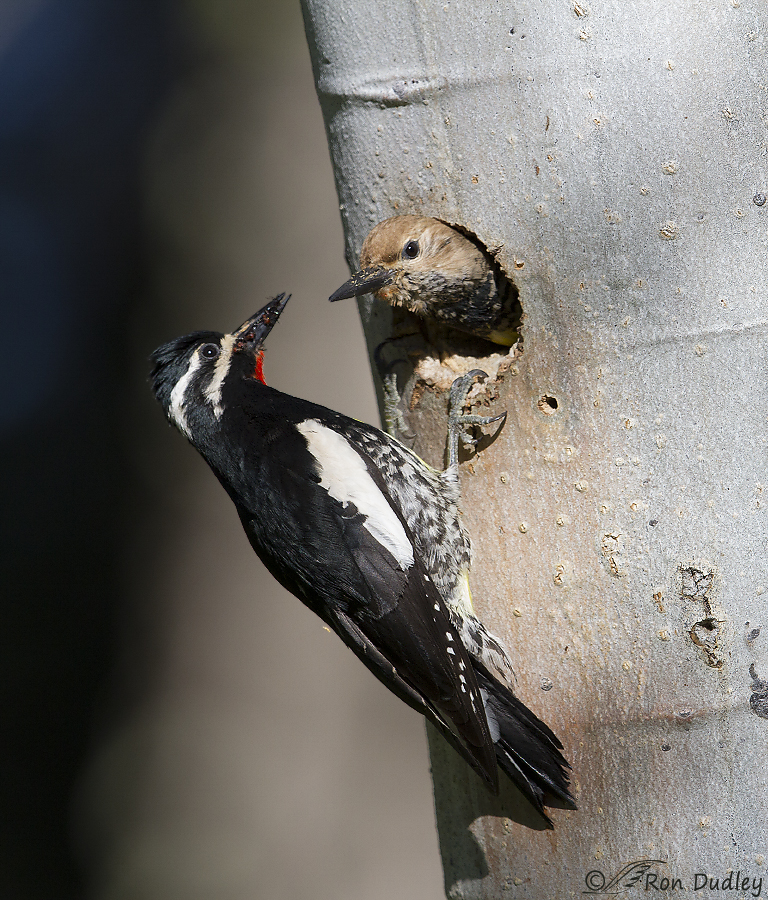
1/2000, f/5.6, ISO 640, Canon 7D, Canon EF500mm f/4L IS II USM, not baited, set up or called in
This is the male and female Williamson’s Sapsuckers at their nest hole. I include this shot so that the viewer can get a positive ID on the hole – there were five of them in the tree at various stages of construction.
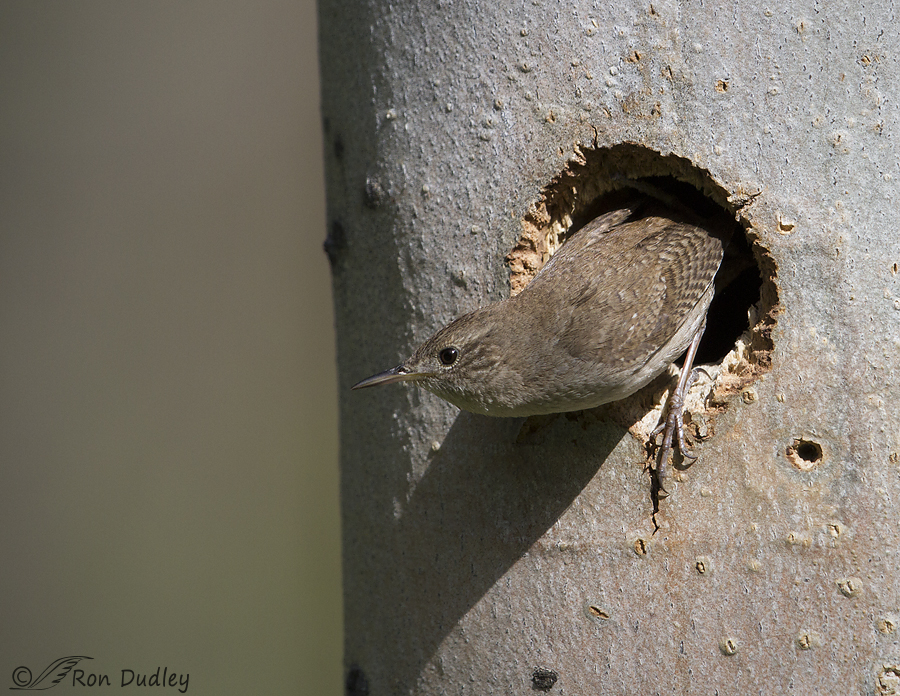
1/2000, f/6.3, ISO 640, Canon 7D, Canon EF500mm f/4L IS II USM +1.4 tc, not baited, set up or called in
On my first trip to the nest-tree at the end of May there apparently was still some speculation about what species would occupy which hole. The sapsuckers had obviously excavated all five holes and they were most interested in this one (same one as in the first image) but so was a pair of House Wrens.
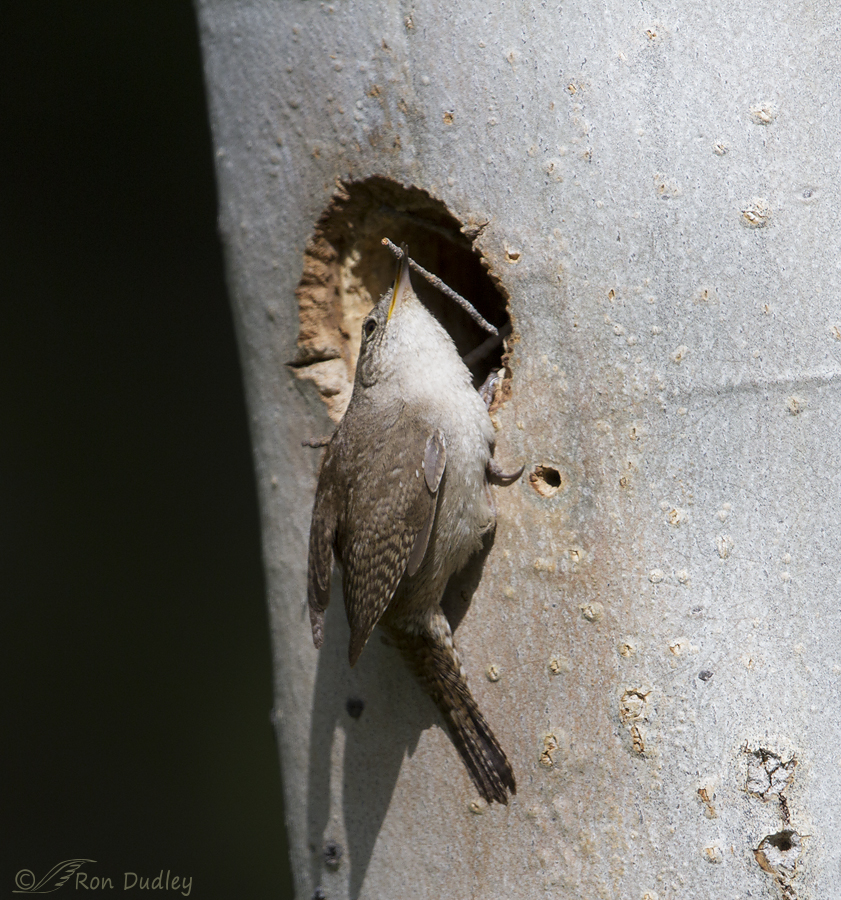
1/1600, f/6.3, ISO 640, Canon 7D, Canon EF500mm f/4L IS II USM +1.4 tc, not baited, set up or called in
In fact the wrens were even busy delivering nesting material to the hole – here the bird is trying to wrestle a long twig into the entrance. But eventually the wrens gave up and accepted…
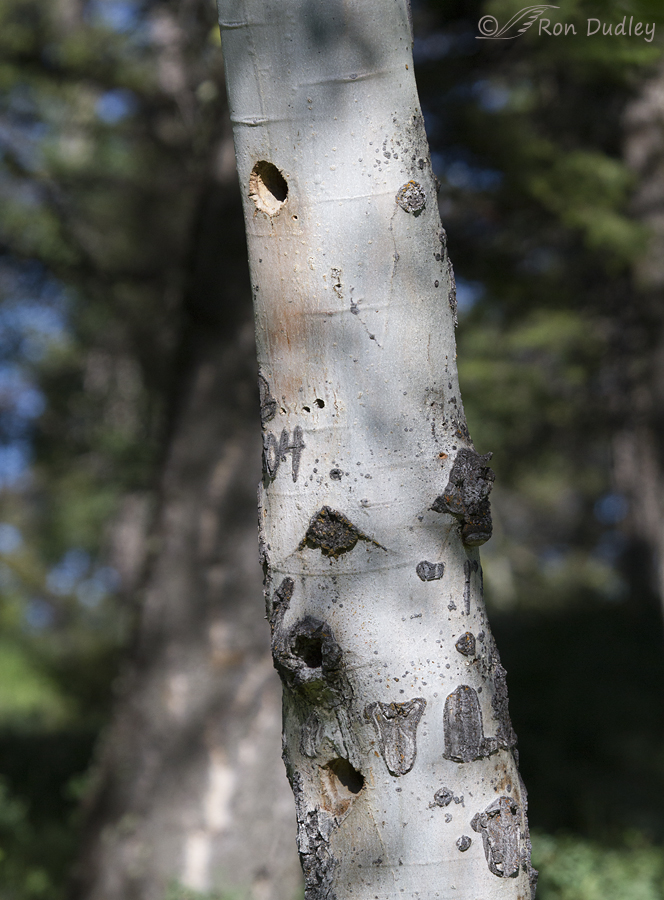
a lower nest hole on the tree. The one at the top of this photo became the sapsucker nest and the one at the bottom was occupied by the wrens when we returned to the area about a month later.
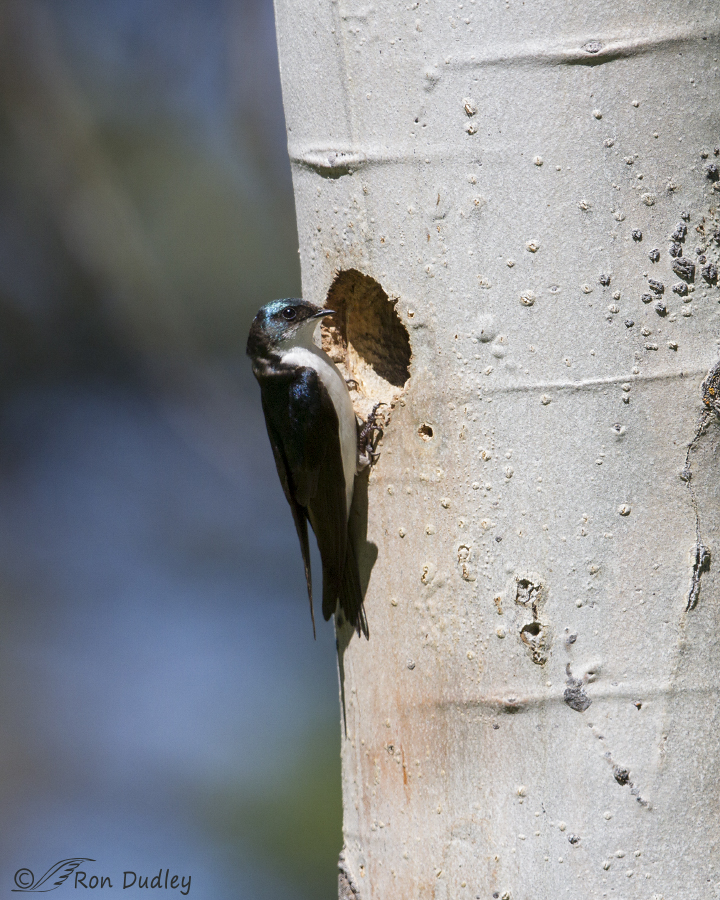
1/2000, f/6.3, ISO 640, Canon 7D, Canon EF500mm f/4L IS II USM, not baited, set up or called in
Tree Swallows are noisy little busy-bodies and they were constantly peeking into the sapsucker nest even with one of the adult sapsuckers inside. But to my knowledge none of the swallows nested in this tree.
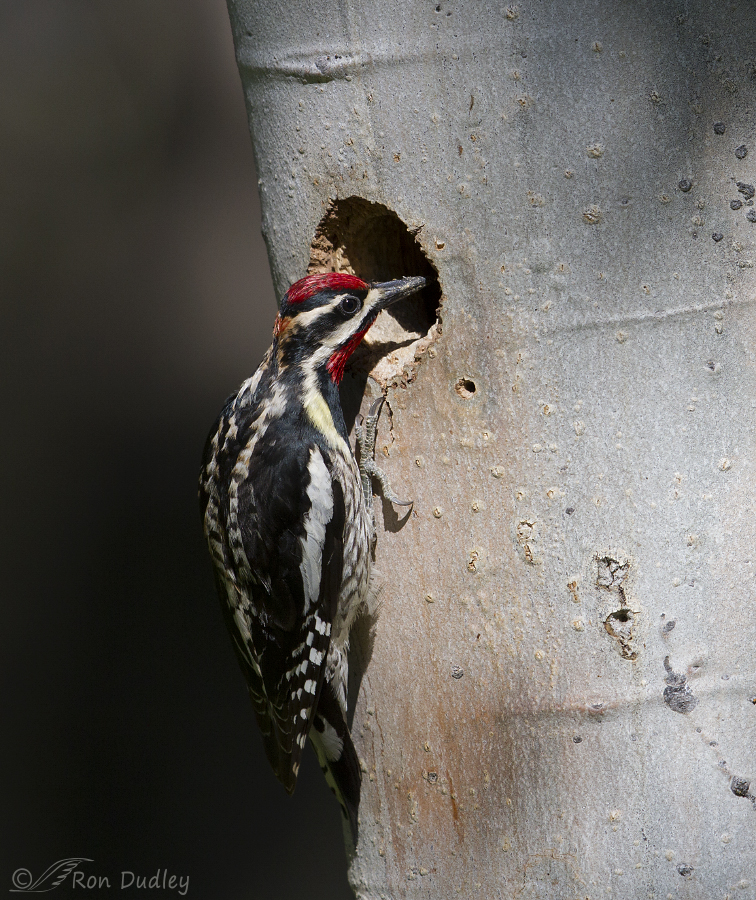
1/4000, f/5, ISO 640, Canon 7D, Canon EF500mm f/4L IS II USM, not baited, set up or called in
To me the most interesting interloper was this Red-naped Sapsucker who hung around for a few minutes one morning and actually poked its head deep into the hole with the female Williamson’s inside.
I think the Red-naped got the hint because I never saw it at the tree again.
Ron
Note: I’m off on another jaunt to Montana – duration unknown. I’ve scheduled posts in my absence but I’ll be without access to a computer so I won’t be responding to any comments, though I do receive your comments on my phone when I have a signal and I always enjoy them.
Wish me luck with the smoke from the fires in Washington, Oregon and Idaho – the prevailing wind direction is not helpful…


Wonderful images, crisp and clear…even more interesting behaviors…fascinating!!!
Terrific Ron! Enjoyed it. Only birds missing are the bluebirds. bravo
Hahahaha! I wish I could have seen the Red-Naped get swatted by the female. I’ll bet she told that one whatfor.
How fascinating. I do love your behavioural posts. And my anthromorphic mind works overtime. Thanks Ron – and I hope you are having a fabulous time – and well away from the fires and their fallout.
I love the first photo of the pair of Williamson Sapsuckers! As for the Red-naped Sapsucker, “Good job ladies! 😉 ”
Ron, do you know if this was an old Mimosa Tree? In my old home in central Florida, that I lived for 38 yrs, there was an immense old mimosa tree that literally that last 10 yrs, half of it died. I would never let anyone touch it including my 95 y/o dad who said “If I had his chainsaw I would cut down that old “dead tree” for you.” I said, “No Papa, it is home to a lot of birds & lizards & other little critters (insects) that helped feed the birds!” He just shook his head & walked away! lol I wasn’t about to tell him I had a chainsaw out in my shed! lol I had a bevy of beauties that ate at it’s feeders that I kept filled & nested in it’s holes. There were holes all up & down both main limbs (one side that was dead even housed birds). I recall my happiest day was when a pair of Painted Buntings showed up that fall day & stayed around in nice Florida weather through the warm winter. How beautiful that male was! I took photos through that kitchen window, but through a screen even on manual I could never catch them on the right side of the feeder (kitchen window).
Ron, I really enjoy your work so much! It inspires me so much! Thanks! Annie (in NC soon to be back in FL!) 😉
It is interesting to see that birds are interested in the nest of a different species. I get the part with the wrens, when both species are interested in the same hole. The nosiness of the other birds is clearly disturbing to some nesting birds. Last year, when we were watching a Kestrel nest, the Kestrels were frequently seen going after the Great-tailed Grackles that were nesting nearby, but who were apparently too interested in the Kestrel’s nest tree. Not certain why Grackles would provoke concern in Kestrels, but we have some of that documented on video, where many Grackle feathers could be seen flying as the male Kestrel went after one.
Great series!! Those wrens are always busy little birds. Amazing that other birds would stick their heads into the hole when the female was inside.
Oh those little wrens can be such naughty stinkers … they have taken over our bluebird boxes more than once. They actually built the most amazing nest in one of my hanging geraniums this year … the thing is like a tunnel to get down to the eggs / babies!!! I should snap a pic of it before Mother Nature blows it away.
Fantastic and amazing shots. Thanks for sharing interesting to see the behavior. I have seen swallows drive Eastern Bluebirds out of their nesting boxes. They are larger and seem very aggressive.
Charlotte